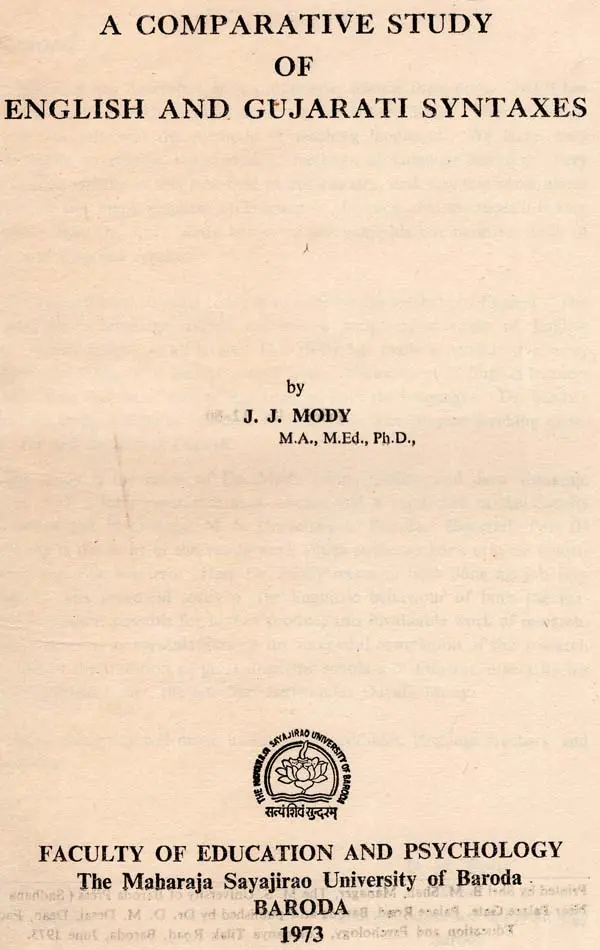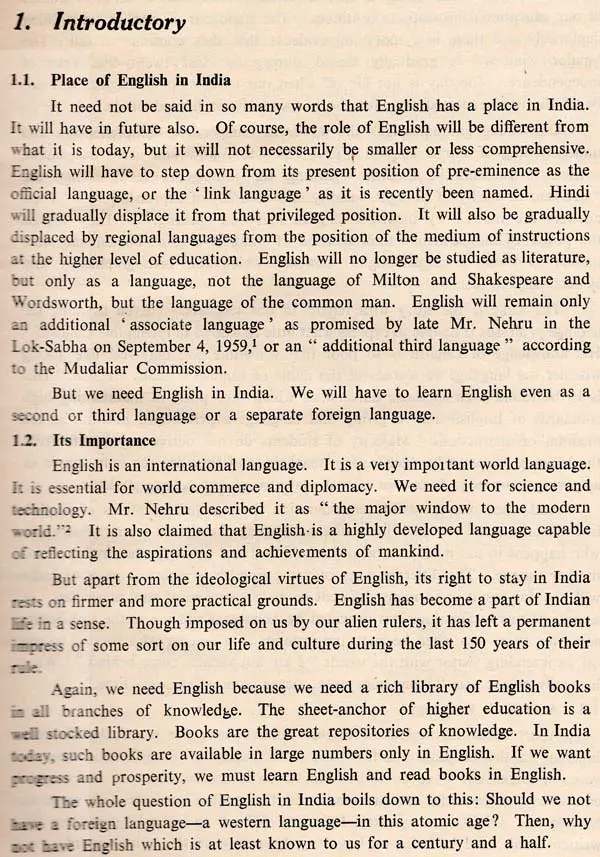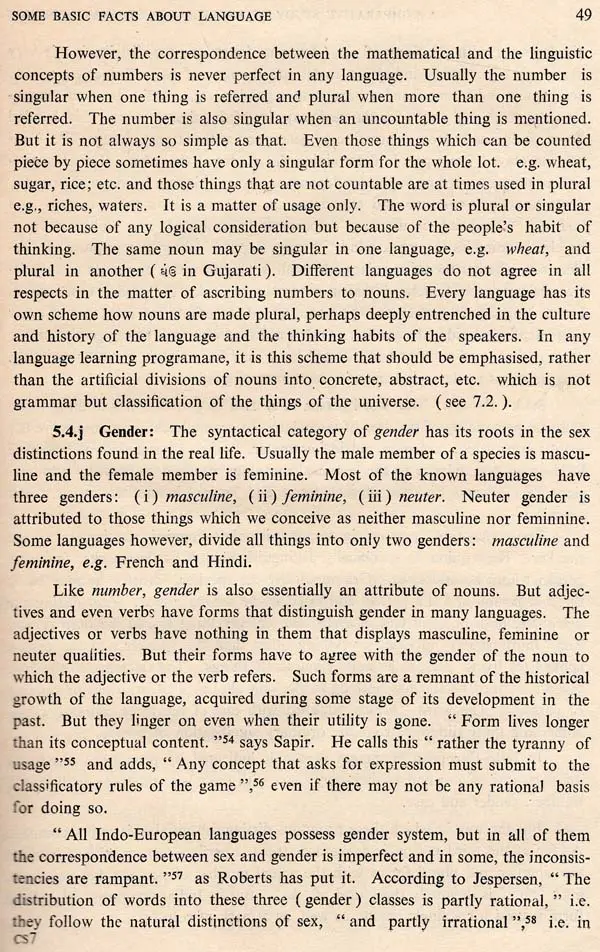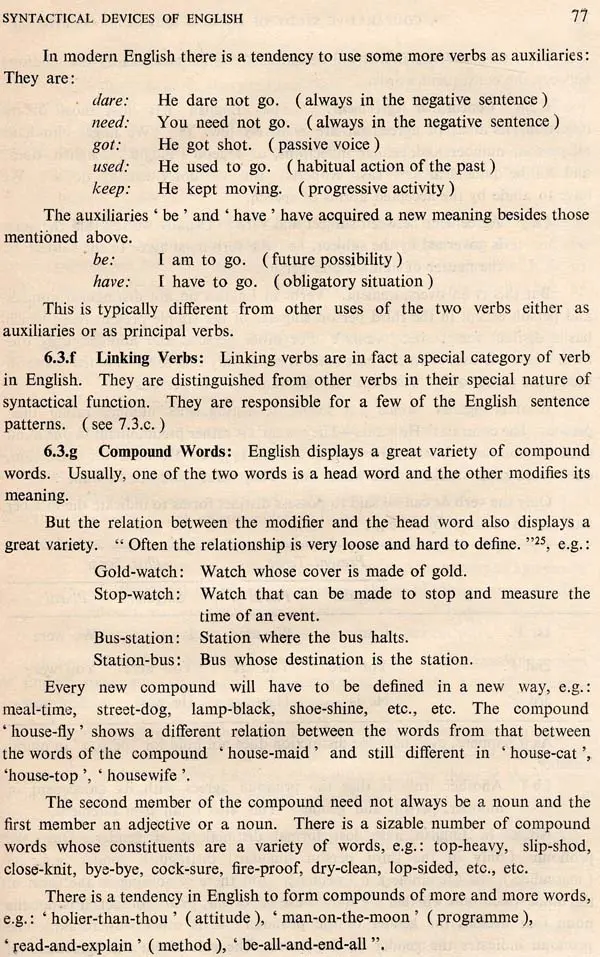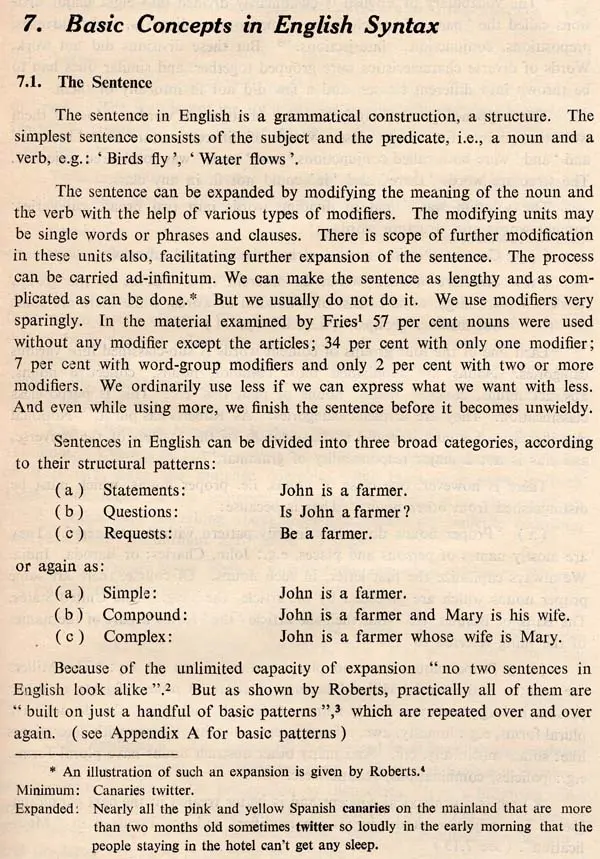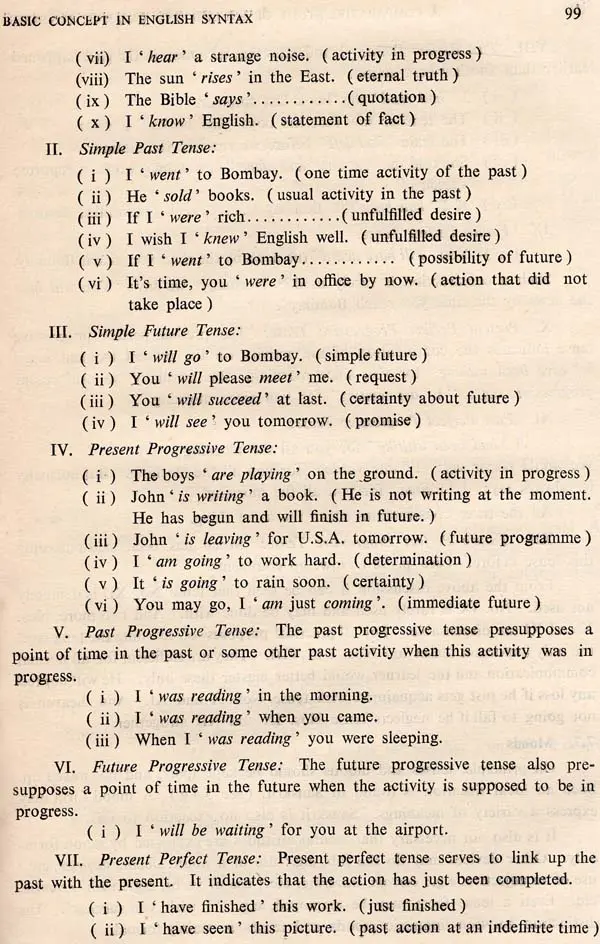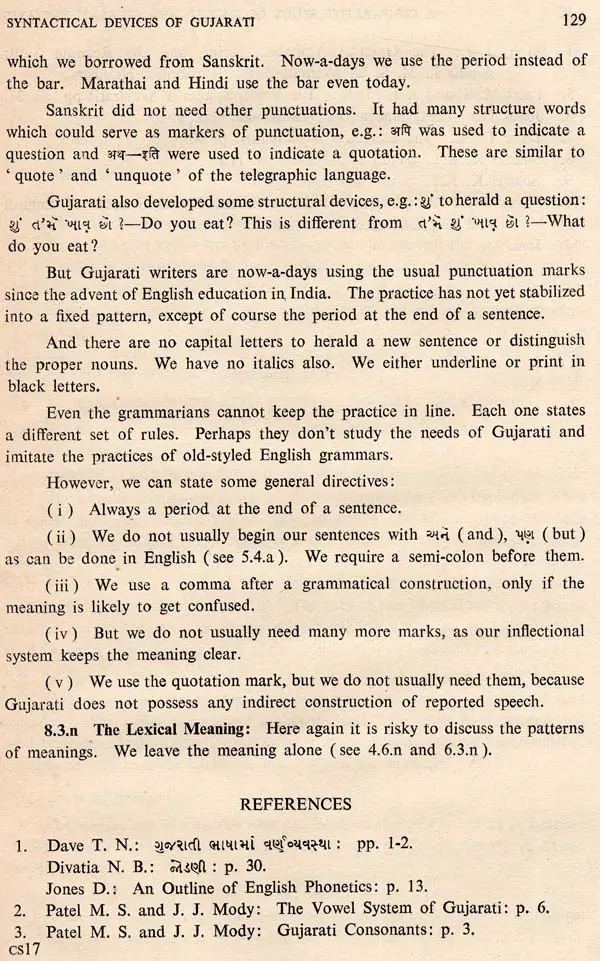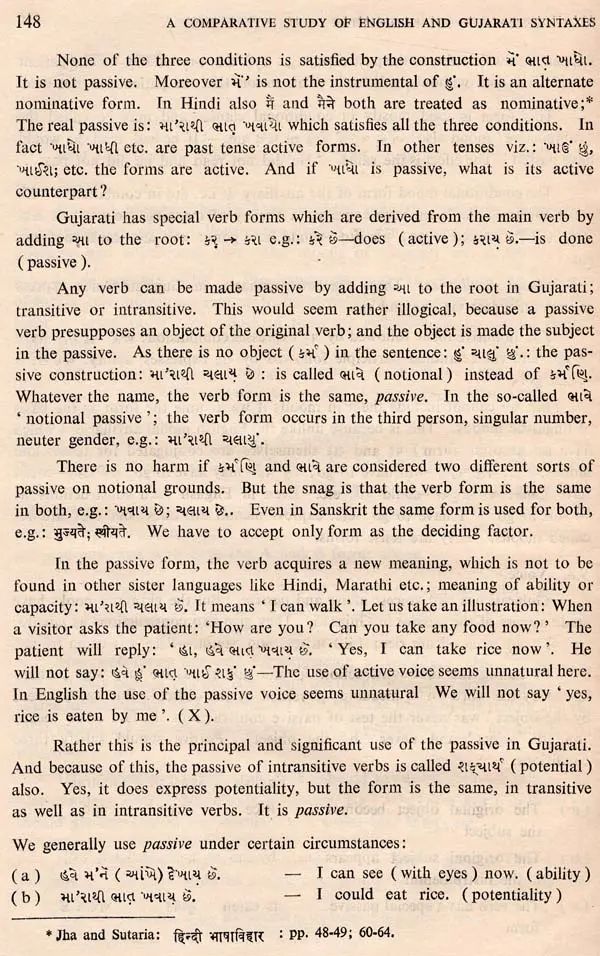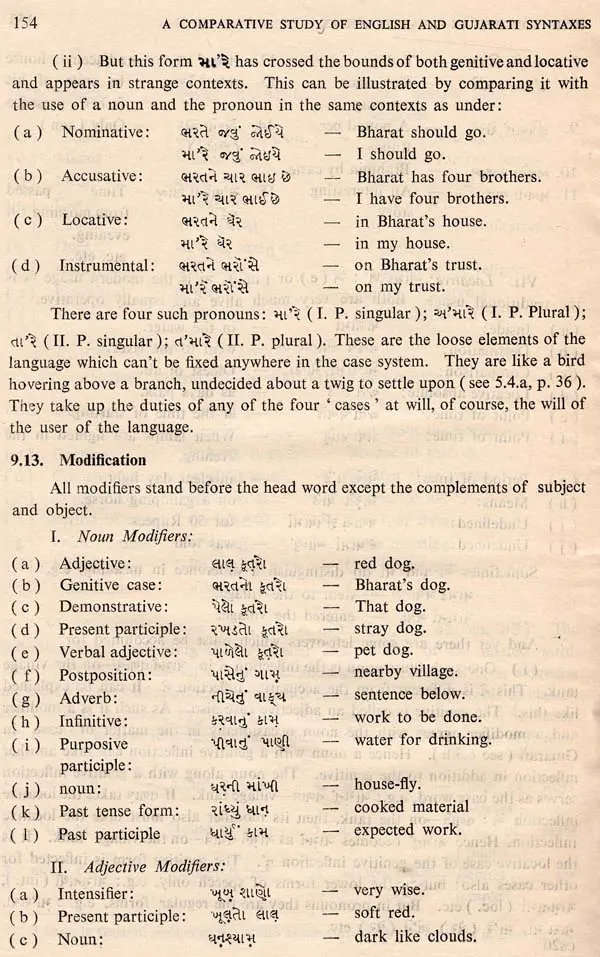
A Comparative Study of English And Gujarati Syntaxes (An Old & Rare Book)
Book Specification
| Item Code: | UAQ807 |
| Author: | J.J Mody |
| Publisher: | The Mahraja Siyajirao University of Barodra |
| Language: | English |
| Pages: | 181 |
| Cover: | HARDCOVER |
| Other Details | 10.00 X 6.50 inch |
| Weight | 410 gm |
Book Description
Linguistics has developed as a progressive science these days. But it has not been so much popular in India as it is in the United States. There, this science has revolutionised the methods of teaching languages. We have very recently begun to employ these modern methods of language learning. Very little has been written in this new field in our country, and very few know about it, especially not many teachers of languages. In such circumstances it is very appropriate that Dr. J. J. Mody has come out with his comparative study of English and Gujarati syntaxes. The greatest need in India today is to improve the teaching of English. The new approach to language studies requires a comparative study of English and the mother tongue at all levels. Dr. Mody has made a comparative study of English and Gujarati at the syntactical level. Naturally most English learners are confused in the use of proper structures of both the languages. Dr. Mody's comparative study will be of immense help to those who prepare teaching mate rial for the new learners of English. The study is the result of Dr. Mody's wide reading and deep thinking, combined with a long experience as a teacher and a researcher in the Faculty of Education and Psychology, M. S. University of Baroda. Especially Part III of the study is the heart of the whole work which is the author's original contribution to linguistic research. Here Dr. Mody seems to have done his job very thoroughly. His profound study of the linguistic behaviour of both the languages has made it possible for him to produce this invaluable work of research. Dr. Mody deserves congratulations on his successful completion of this research which follows the tradition of great linguistic scholars of Gujarat, especially his own distinguished father, the late Shri Jagjivandas Dayalji Mody. I hope this study will prove useful to educationists, language teachers and linguisticians.
The latest approach to 'language learning' is to employ modern methods based on linguistic principles. In India also, we need to employ those modern methods in the teaching of English. The traditional method of teaching English heavily relied on grammar and translation. Even today the grammar translation method remains the most usual method of language teaching in our educational institutions either openly or in disguise. What we need is a scientific approach to foreign language studies, wherein the emphasis is on learning of patterns and structures rather than on mastering of rules of grammar and meaningless forms of words. The new approach requires the patterns and structures of the foreign language to be compared with those of the native language of the learner. A comparison of the two languages: the language of the learner and the language to be learnt, at all levels: phonological, lexical, syntactical and contextual, is the first necessary equipment in any foreign language learning programme. This comes under the purview of comparative linguistics'. It goes by the name of contrastive linguistics' also. Such a comparison depends upon a faithful and accurate description of the languages. This means that first of all we must have a faithful and accurate description of both the languages: English and Gujarati. During my investigation I found that a perfect scientific description of English was ready at hand, only to be gathered from the works of eminent British and American linguists. I had ample material to start with. As for Gujarati I had to start from scratch. Such a scientific description of Gujarati was practically non-existent, especially in the matter of syntax. Whatever was available was rudimentary. This too was scattered and mostly incidental. This sort of unhelpful situation necessitated a double research: first to prepare a scientific description of Gujarati and then to compare it with that of English, item by item. In 1961 I started with the first level of description, i.e., phonology. I made 'A Comparative Study of English and Gujarati Sound Systems' for my master's degree in education. I carried the investigation a step further by making 'A Comparative Study of English and Gujarati Syntaxes' for my doctorate in 1966. The investigation could be complete only when the two languages are described and compared at the remaining two levels: lexis and context. But that is for the future. Describing a language is a complicated job. One is not sure whether he has done the job thoroughly and satisfactorily. It is more so when the purpose is to compare one language with another. I have described Gujarati as I have found it. I have relied on the patterns of speech used by the ordinary educated man in his natural conversation, and not on the English oriented grammar books, nor on the Sanskrit or Anglicised forms of Gujarati used by the learned few. I am aware of my limitations. Mere comparison of two languages is not enough, more so when it is done at only one level. It will not provide the teacher of English or the text book writer enough material to construct a complete programme of teaching that language. There remains the proper grading and arrangement of all individual items so as to suit the teacher and the taught, which is equally a complicated job, and which I intend to do some other time. The thesis has been revised in the light of the remarks of the referees, but not to the extent that the changes would basically alter the quality and character of the thesis. The thesis has to be judged for whatever it is worth. My thanks are due to Dr. M. S. Patel (ex- Dean, Faculty of Education and Psychology). But for his able guidance, persistent encouragement and versatile advice from time to time I might not have perhaps done the job so satisfactorily. My thanks are also due to all those who helped me and supplied me valuable data. Lastly I am sincerely thankful to the M. S. University of Baroda, without whose patronage my thesis would not have gone for printing and would never have seen the light of the day. The thesis was submitted in December 1966. It was approved in November 1967. And the degree was awarded in 1968.
**Contents and Sample Pages**
